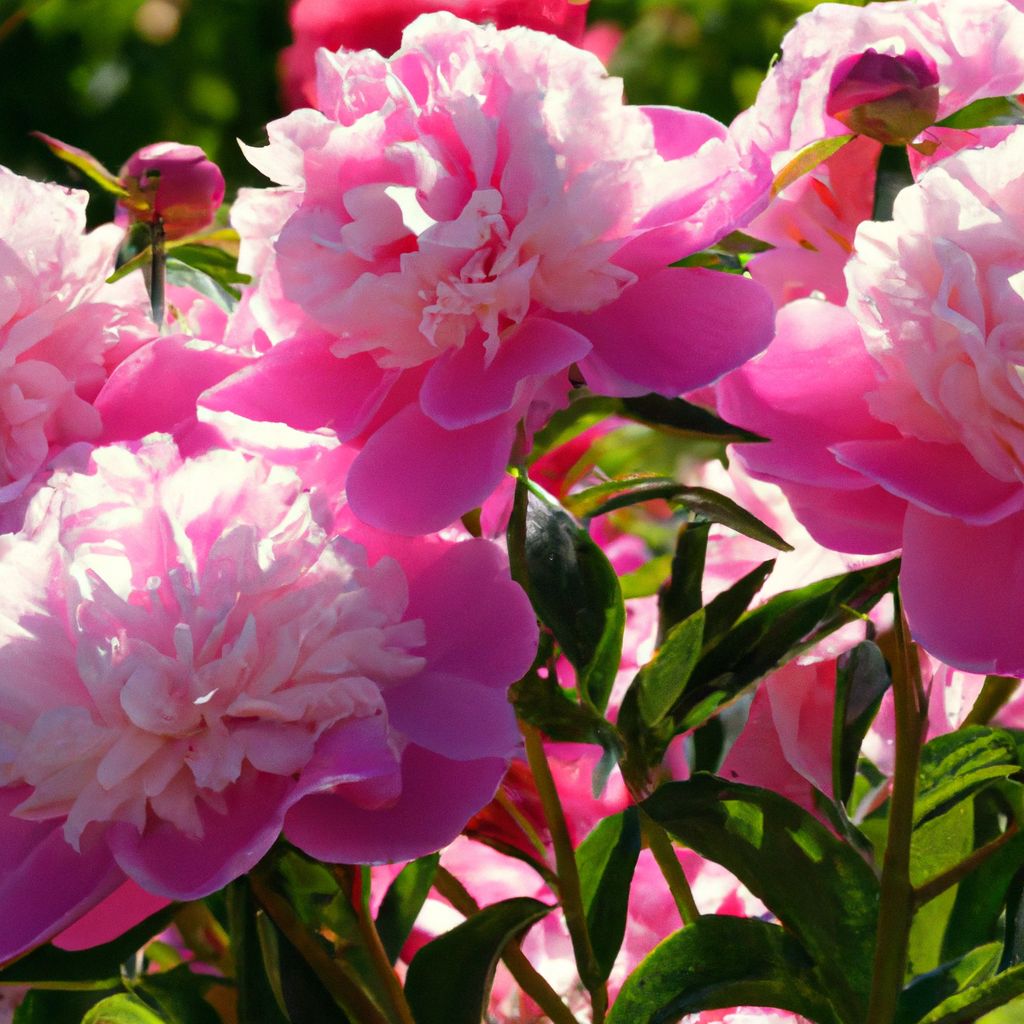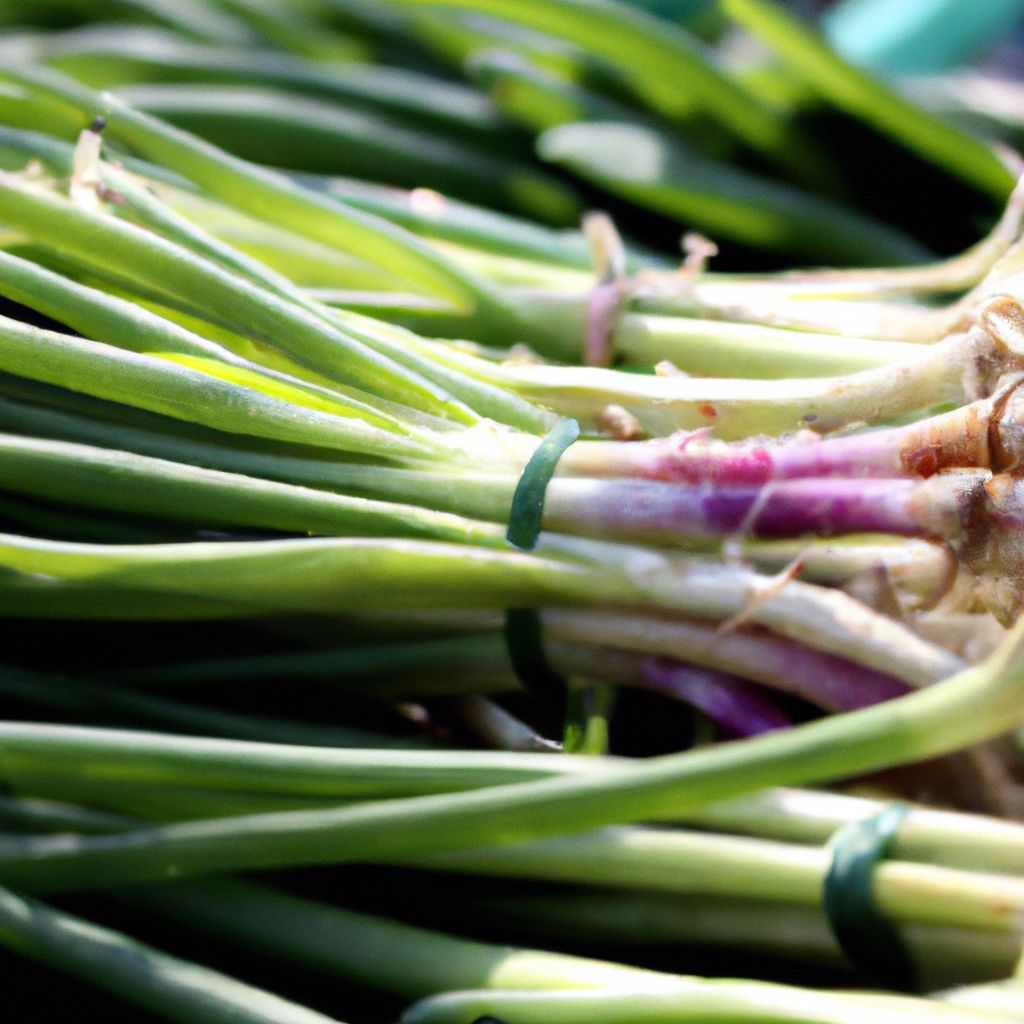Peonies are treasured for their magnificent blooms and timeless elegance. This comprehensive guide will walk you through everything you need to know to grow these charismatic flowers and enjoy their beauty in your own garden.
The Allure of Peonies
What makes peonies so captivating? Their sumptuous, romantic blooms have an irresistible appeal. Peonies come in a diverse range of colors like white, pink, red and yellow. With large, lush, ruffled flowers, peonies add a decadent touch of luxury to any garden. Some varieties produce wonderfully fragrant blooms, further enhancing their charm. As hardy perennials, peonies provide reliable beauty year after year. It’s no wonder gardeners have been enamored with peonies for centuries.
Selecting Peony Varieties
One of the joys of growing peonies is choosing from the diverse range of varieties available. Consider the following types:
Herbaceous Peonies
Herbaceous peonies are the most common type. In winter, their roots die back completely, then regrow in spring. The plants produce an abundance of gorgeous blooms on stems rising up from their tuberous root system. Herbaceous peonies come in many colors and are generally quite hardy.
Tree Peonies
Tree peonies have woody stems that don’t die back to the ground in winter like herbaceous varieties. Their flowers are often enormous, sometimes up to 10 inches across! Tree peonies are slower growing but provide dramatic impact in the garden. They tend to be less winter hardy than herbaceous types.
Itoh Peonies
Itoh peonies, also called intersectional peonies, are a hybrid cross between herbaceous and tree peonies. They offer the best qualities of both – the wide range of colors and floriferous nature of herbaceous peonies along with the sturdy stems and large, lush blooms of tree peonies.
Important Considerations When Selecting Varieties
- Flower color – Select peony varieties that offer the flower colors you find most appealing.
- Bloom time – Choose a mix of early, mid and late season bloomers to extend the enjoyment.
- Fragrance – Scented varieties add an extra dimension of sensory pleasure.
- Plant size – Consider the mature size of each variety and space plants accordingly.
- Hardiness – Check climate hardiness zones when choosing varieties to ensure they will thrive.

Preparing for Planting
Proper planning and preparation of your garden bed ensures your peonies get off to the healthiest start possible and thrive for years to come.
Choosing the Optimal Location
- Sun exposure – Peonies require a location with at least six hours of direct sun daily for best growth and flowering.
- Soil drainage – Excellent drainage is crucial, as peonies dislike soggy soil. Avoid low spots where water collects.
- Air circulation – Space plants appropriately to allow good air movement around the foliage.
- USDA Hardiness Zone – Check your zone and select varieties proven to thrive in your climate.
Preparing the Soil
Prepare peony beds very thoroughly before planting. Here’s how:
- Loosen the soil to a depth of at least 12 inches using a spade or tiller.
- Mix in plentiful amounts of organic material such as compost, well-aged manure, leaf mold or peat moss. This greatly improves drainage and provides nutrients.
- Thoroughly blend amendments into the soil.
- Use a soil testing kit to check the pH. Peonies prefer slightly acidic soil around 6.5-7.0. Adjust if needed.
- For heavy clay soil, add sand to improve texture. For very sandy soils, blend in clay.
- Ensure the planting bed is well-watered before planting peonies.
Gathering Planting Supplies
Before planting day, gather these supplies and have them on hand:
- Peony roots or young plants ready for transplanting
- Garden fork, spade or tiller
- Compost, manure or other organic soil amendments
- Garden hose & spray attachment
- Mulch such as shredded bark or compost
- Stakes or plant supports as needed
Planting Your Peonies
Using proper techniques when planting peonies gives them the healthiest start possible. Here’s how to plant them successfully:
Timing Considerations
Peonies are planted in either early spring or early fall:
- Spring – Plant potted peonies or bareroot roots as soon as the ground can be worked in spring.
- Fall – Planting in early fall allows roots to establish before winter dormancy.
Step-by-Step Planting Process
Follow these steps when planting peonies:
- Dig holes that are wider than the peony’s root system and deep enough to accommodate the roots without crowding.
- Place the peony roots or transplant in the hole. Position the pink buds or “eyes” facing upward.
- Backfill soil around the roots and firm it gently with your hands to eliminate air pockets.
- Water thoroughly after planting to help settle the soil.
- Apply 2-3 inches of organic mulch around plants to conserve moisture and reduce weeds.
- Insert stakes around larger varieties as needed for support.
Follow-up Care for New Plantings
Give your newly planted peonies attentive follow-up care:
- Water whenever the top inch of soil becomes dry. Avoid overwatering.
- Apply an all-purpose fertilizer early in the growing season.
- Monitor regularly for pests like aphids and treat if found.
- Make sure plants receive sufficient sun exposure and airflow.

Ongoing Peony Plant Care & Maintenance
With just a bit of regular care and attention, your peonies will thrive and bloom abundantly year after year.
Watering Needs
Peonies prefer consistent moisture in the soil. Follow these watering guidelines:
- Provide peonies with about 1 inch of water per week from either rain or supplemental watering.
- Water deeply and thoroughly, rather than frequent light waterings.
- Avoid both under and overwatering. Monitor soil moisture before watering.
- Water in early morning or late afternoon to reduce evaporation loss.
- Adjust watering based on weather, soil type and other conditions.
Fertilizing Recommendations
- Apply fertilizer shortly after new spring growth emerges.
- Use formulations designed for flowering plants, such as rose fertilizer.
- After the initial spring feeding, fertilize again immediately after bloom period ends.
- Always follow package directions for proper fertilizer amounts.
- Excess fertilizer leads to abundant foliage rather than flowers.
Pruning Needs
- Prune peonies when plants become dormant in late fall after the first hard frost blackens the foliage.
- Cut back spent stems to ground level and remove all dead leaves and foliage.
- Pruning improves air circulation and reduces disease risks.
- Take care not to prune too early in fall or spring flowering may be reduced.
Supporting Peony Stems
Taller varieties of peonies frequently need some type of support to prevent flopping under the weight of their massive blooms. Here’s how to provide the proper supportive peony plant care:
- Use peony hoops, rings or sturdy stakes. Insert these supports in early spring before stems elongate.
- Position individual stakes or hoops around each emerging stem.
- Gently tie stems to supports using soft ties or stretchable plant tape as they grow taller.
- Check ties periodically and loosen any that become too tight.
Controlling Pests & Diseases
Be vigilant in watching for problems with insects, animals, fungi or bacteria. Take prompt action at the first signs of an issue.
Common Peony Pests
- Aphids
- Thrips
- Japanese beetles
Disease Prevention
- Ensure good garden sanitation and cleanup of fallen debris.
- Promote good air circulation around plants.
- Water at the soil line rather than wetting foliage.
- Follow good cultural practices to maintain plant vigor.
Treatment Options
- Knock aphids off stems with water spray from the hose.
- Apply appropriate organic or chemical insecticides for severe infestations.
- Remove and destroy severely diseased foliage.
- Use fungicidal sprays as a last resort for fungus issues.
Harvesting and Displaying Peony Blooms

Part of the pleasure of growing peonies is having the ability to cut fresh flowers for indoor display. Follow these guidelines for the best results:
Harvesting Peonies for Cut Flowers
- For maximum vase life, cut stems when flower buds are showing color but still tight, not fully open. The ideal time is early morning or evening.
- Use clean, sharp pruners or garden scissors for cutting. Slice stems at an angle.
- Immediately place cut stems in a bucket of fresh water after harvesting.
- Remove any foliage or side shoots that would sit under the water level in arrangements.
Conditioning & Arranging Peony Blooms
- Re-cut stems every few days while displaying peonies and replace the water to maximize their show period.
- Consider using cut flower food to provide nutrients and prolong vase life. Follow package directions.
- Display peonies in a cool location out of direct sun to extend their beauty.
- Peonies make stunning centerpiece arrangements. Their large, lavish blooms are the perfect focal point.
- Complement them with other garden flowers like roses, iris, larkspur or lilies.
Drying Peonies
You can dry peony blooms to enjoy their beauty long after the growing season ends:
- Cut flowers when fully open. Remove excess foliage.
- Hang upside down or stand stems in a dry vase without water in a dark, well-ventilated room.
- Allow 1-3 weeks for flowers to air dry completely.
- Enjoy dried peonies in floral arrangements or as home decor accents.
Troubleshooting Common Peony Problems
Even experienced gardeners encounter the occasional issue growing peonies. Stay alert for common troubles and learn their causes so problems can be resolved promptly.
Yellowing Leaves
Potential causes:
- Nutrient deficiencies
- Overwatering
- Poor drainage
- Root damage from fungus
- Pest infestations
Solutions:
- Test soil and amend as needed to supply nutrients
- Improve drainage; avoid overwatering
- Control pests and diseases
- Remove yellowed leaves to improve appearance
Lack of Blooms
Potential causes:
- Insufficient sunlight
- Extreme cold weather
- Excessive fertilizer
- Overgrown plants crowding buds
- Poor soil conditions
- Improper planting depth
Solutions:
- Increase sun exposure to 6+ hours daily
- Provide winter protection in very cold climates
- Avoid overfertilization which causes foliage instead of flowers
- Divide congested plants
- Improve soil drainage and pH if needed
- Ensure peonies are planted properly
Floppy Stems
Potential causes:
- Insufficient support for heavy blooms
- Excessive watering causing weak growth
- Crowded plantings with poor air circulation
Solutions:
- Insert peony hoops or sturdy stakes around plants in early spring
- Gently tie stems to supports
- Improve air flow between plants
- Avoid overwatering
- Use more dwarf varieties with naturally sturdy stems
Root Rot
Potential causes:
- Excess soil moisture from overwatering
- Poorly draining or compacted soils
- Fungal pathogen infections
Solutions:
- Allow soil to moderately dry between waterings
- Amend soil to improve drainage
- Avoid planting in heavy, dense soils
- Disinfect tools to prevent spreading fungi
- Remove badly infected roots and dispose of them
The Timelessness of Peonies
With the proper selection, planting, care and maintenance, peonies will thrive and delight for generations. Their sumptuous blooms and graceful presence have captivated flower lovers for centuries. For anyone wanting beautiful, low-maintenance perennials, peonies remain one of the most treasured flowers to cultivate. They add elegance, fragrance and style to any garden space.
















































